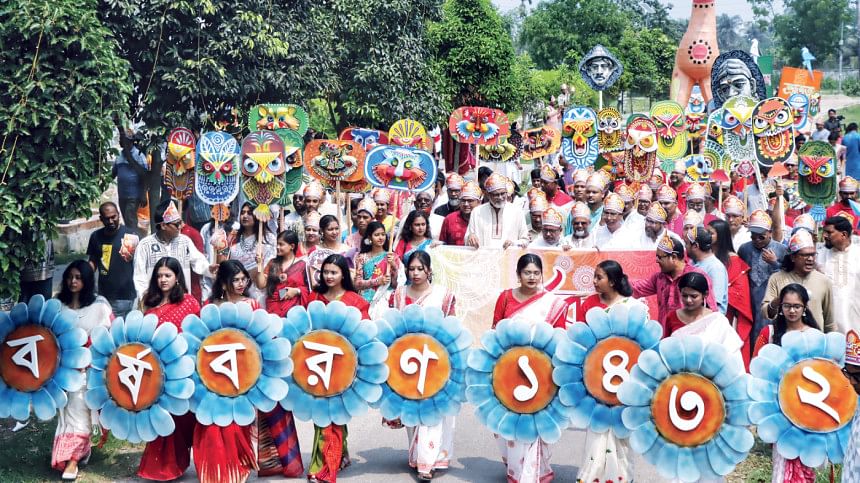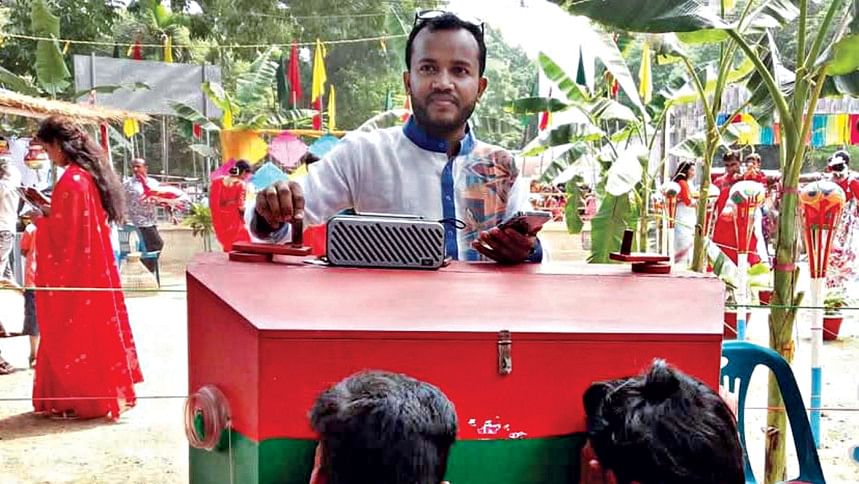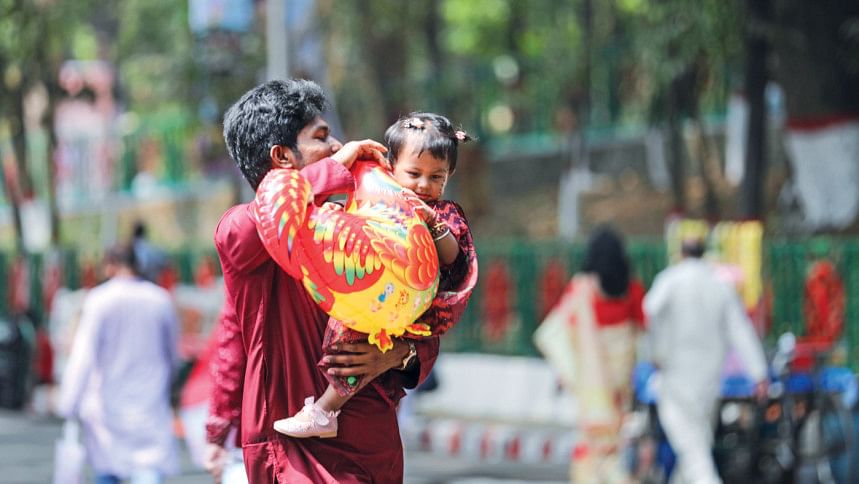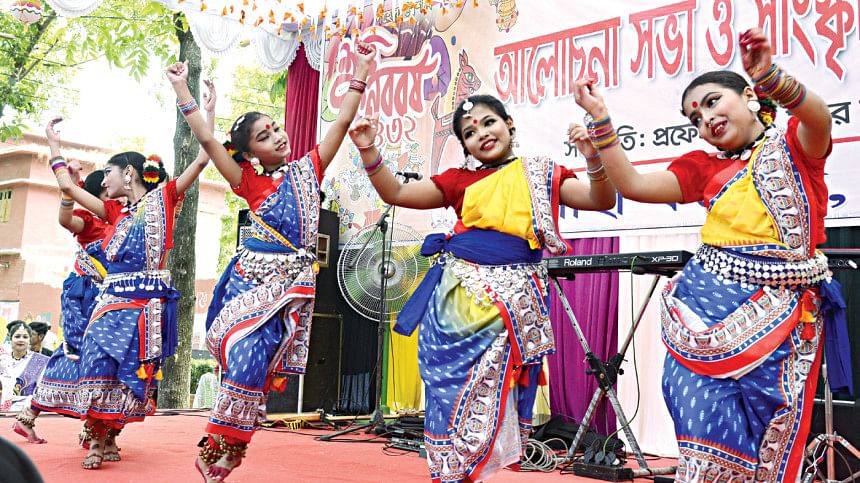Pahela Baishakh Nation celebrates its roots through dance and music

With the first light of Monday, Bangladesh stepped into the Bangla year 1432, as people from all walks of life embraced Pahela Baishakh with joy, tradition, and a renewed sense of community.
From Chhayanaut's stirring dawn melodies beneath Ramna's ancient banyan tree to a mesmerising drone show over Manik Mia Avenue at dusk, the New Year was marked by vibrant festivities, cultural pride, and peaceful public gatherings across the country.

MORNING MELODIES
In the capital, the day began with Chhayanaut's iconic programme at Ramna Batamul, held under the theme "Amar Mukti Aloy Aloy" (My Freedom Lies in Light), honouring co-founder Sanjida Khatun.
Over 150 artistes performed a seamless sequence of 24 choral pieces, solos, and poetry recitations. Among them were beloved classics like Nuton Pran Dao, Timir Duar Kholo, and Shono Shono Deshobashi.

ANONDO SHOBHAJATRA
Later in the morning, the Faculty of Fine Arts at Dhaka University led its annual rally, now renamed "Borsho Boron Anondo Shobhajatra," reverting to its 1989 title in place of the more familiar Mangal Shobhajatra.
While authorities defended the move as a return to roots, critics -- especially students and alumni -- voiced concern over its political undertone.
This year's procession carried the theme "Symphony of the New Year, End of Fascism," showcasing motifs of peace, resistance, and solidarity with Palestine.
An effigy resembling a monstrous face -- widely believed to represent ousted Prime Minister Sheikh Hasina -- was set ablaze before but rebuilt in time for the 9:00am march.
"This year featured the largest representation of ethnic communities from both hills and plains, alongside Bangalees," said DU Vice-Chancellor Md Niaz Ahmed Khan.
Cultural Affairs Adviser Mostofa Sarwar Farooki added, "We targeted fascism, not politics -- it's a universal evil."
MUSIC, ART, AND WARNINGS
At Rabindra Sarobar in Dhanmondi, cultural platform Shurer Dhara presented a dawn concert featuring works by Tagore, Nazrul, and other Bangalee greats.
Indigenous performers from the Chittagong Hill Tracts and Mymensingh enriched the programme, while folk games and rural crafts created a festive, fair-like setting.
In Gulshan, Shahabuddin Park saw a community-led celebration by the Gulshan Society and social platform "Oligoli Borshoboron Bondhugan."
Chief guest Prof Anu Muhammad warned of growing cultural intolerance.
"Those who fear women in public, who resist joy, are re-emerging," he said.
The Daily Star Editor and Publisher Mahfuz Anam, Gulshan Society President Omar Sadat, and organiser Navin Murshed also addressed attendees.

HEROES IN THE SKY
As darkness fell, the skies over Manik Mia Avenue lit up with a 14-minute drone display.
Organised by Bangladesh Shilpakala Academy with support from the Ministry of Cultural Affairs and the Chinese Embassy, 2,600 drones illustrated 12 motifs telling the story of the July Uprising.
The sequence began with a bird escaping a cage and included images of martyr Abu Sayed, women protestors, rickshaw-pullers, and a timeline from 1971 to 2024.
Messages of peace, Palestine solidarity, and 50 years of Bangladesh–China friendship brought the show to a close with "Shubho Noboborsho."
A pre-show concert featured artistes including Mithun Chakraborty, Atia Anisha, Rakib, and the band Ashes, alongside folk performers Islamuddin Palakar and F Minor.
FESTIVITIES NATIONWIDE
Across the country, cities echoed with celebration.
Bangla Academy launched a week-long Baishakhi Fair. Chattogram hosted shows at CRB and Shilpakala Academy, though a DC Hill event was cancelled after vandalism.
In Barishal, a student-led rally added colour to the streets, and similar events took place in Khulna, Thakurgaon, Narayanganj, and Bagerhat.
Public universities, including Jahangirnagar and Rajshahi University, joined in the festivities.
Nobel Laureate Professor Muhammad Yunus, in a message to the nation, called Pahela Baishakh "a symbol of social harmony," urging all to celebrate it in keeping with their own traditions and values.

 For all latest news, follow The Daily Star's Google News channel.
For all latest news, follow The Daily Star's Google News channel. 



Comments